COVID Hovers Over Holiday Parties:
3 BuzzFeed Staffers Test Positive
BNC Gains a Carrier but Announces Layoffs
Where Are the Native Journalists on Network News?
Anger Over Border Agent’s Spying on Journalists
Sister Writers Say bell hooks Inspired Them
They’re ‘Unseen’: Sexually Exploited Boys of Color
More Prominence in White House Briefing Room
N.Y. Times Homes In on Motive for Moise Killing
Short Takes: Scholarship for Afro-Latino students; Andrea Valdez; David Plazas; Byron Allen; Jourdan Bennett-Begaye and Indian Country Today; influence of political commercials; Philadelphia photographers; Ebony Reed; PBS “Washington Week” diversity; Essex Porter; Art Franklin; Janet Rodríguez; Kendra Andrews; Rosetta Miller-Perry; protecting Latin American journalists; Sierra Leonean rapper’s insult; Indian government’s online censorship; Ethiopia’s arrests of journalists.
Homepage photo credit: Farland Chang.
Support Journal-isms
3 BuzzFeed Staffers Test Positive
At 2:27 p.m. Eastern time Thursday, the South Asian Journalists Association sent out this message from New York: “It’s a bit sad to report, but the Board decided a few days ago to hold our annual members meeting and holiday party virtually this year due to the omicron variant and uptick in positive cases. But, we hope that means more of you can join us online TONIGHT at 6:30 PM!”
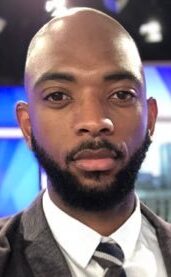 In Washington, however, the Washington Association of Black Journalists was preparing for its in-person holiday party, its promotional drumbeat successful — it sold out. “We sold more than 100 tickets and about 70-80 people attended,” WABJ President Khorri Atkinson (pictured) told Journal-isms.
In Washington, however, the Washington Association of Black Journalists was preparing for its in-person holiday party, its promotional drumbeat successful — it sold out. “We sold more than 100 tickets and about 70-80 people attended,” WABJ President Khorri Atkinson (pictured) told Journal-isms.
Simultaneously, “CBS Evening News” anchor Norah O’Donnell included holiday parties among activities being revised as the omicron variant gained traction.
And The Insider was readying a report by staffer Steven Perlberg that “A number of BuzzFeed Inc. staffers have tested positive for COVID-19 following the digital media company’s holiday party last week, according to three employees who tested positive and contact tracing outreach obtained by Insider.
“The outbreak comes as COVID-19 cases surge across New York City, sparking concerns about the highly infectious Omicron variant leading to breakthrough cases among the vaccinated. The three positive employees told Insider they were vaccinated, had received their booster shots, and said they were experiencing mild symptoms.”
If journalists were modeling a response to the COVID pandemic that their readers, viewers and listeners could emulate, they were doing so inconsistently.
Experts such as Dr. Eric Topol, founder and director of the Scripps Research Translational Institute, were on the nightly news programs that night warning about omicron. Topol said on the “PBS NewsHour,” “This is a virus strain that’s doubling just over two days, which we have never seen anything like that. We’re seeing it light up in the U.K., in Norway, in Denmark. And it really is exponential growth, the likes of which we haven’t seen since the pandemic started.
“So it’s inevitable that it’s going to hit the United States, and it already is rising very quickly. And, unfortunately, a lot of people haven’t appreciated that this is something we can’t avoid right now in terms of this very — it has to be seen as an onslaught of Omicron new cases.”
The media cases prompted dark humor from New York magazine, writing about parties in that city. “Everyone seemed to know someone who’d tested positive that very morning,” Shawn McCreesh wrote Thursday. “Suddenly, it all spilled on to Twitter. ‘we’re calling the wave of COVID currently ravaging Brooklyn “The Media Variant,” ‘ tweeted BuzzFeed’s Julia Reinstein. Business Insider’s Jake Swearingen wrote: ‘you have about 12 hours left to get covid if you want to stay on trend.’ The writer Jamie Lauren Keiles: ‘everyone who is anyone has covid right now.’ ”
A random sampling of journalists of color organizations around the country found differing approaches to COVID, just as with the different states around the country.
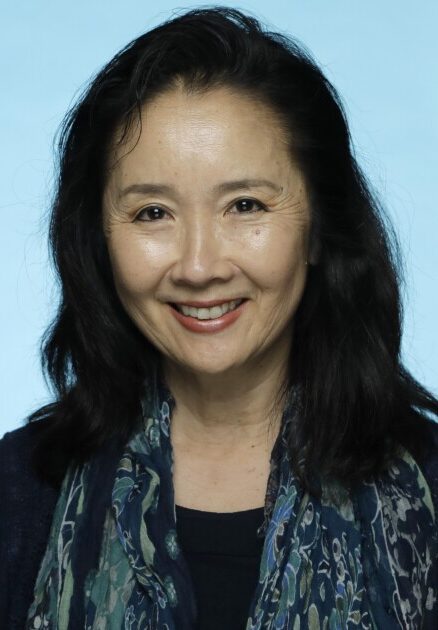 “Yes, AAJA-LA held our first in-person holiday party in two years on Saturday, 12/11,” messaged Teresa Watanabe (pictured), president of the Asian American Journalists Association’s Los Angeles chapter. “We held it in an outdoor patio space at Far Bar, a restaurant in Little Tokyo. They fixed up the space really nicely, with trellises, planters, space heaters and tables. Because it was outdoors, Far Bar did not have any Covid protocols (e.g. vax cards etc) and some people masked while others did not.
“Yes, AAJA-LA held our first in-person holiday party in two years on Saturday, 12/11,” messaged Teresa Watanabe (pictured), president of the Asian American Journalists Association’s Los Angeles chapter. “We held it in an outdoor patio space at Far Bar, a restaurant in Little Tokyo. They fixed up the space really nicely, with trellises, planters, space heaters and tables. Because it was outdoors, Far Bar did not have any Covid protocols (e.g. vax cards etc) and some people masked while others did not.
“We featured light appetizers of California rolls/veggie rolls; chicken/tofu skewers; wasabi fries and edamame. The attendees got their own drinks. More than 40 people came out from all kinds of outlets – LA Times, NY Times, Southern Cal News Group, CNN, AP, the Rafu Shimpo, several universities (journalism instructors and student chapter members) etc. Although it was supposed to run from 5-8 p.m. people mingled until past 9 p.m. We had a great time and it was terrific to be able to hang out in person again!”
In Washington, Atkinson had responded to an inquiry nine days before the party began. “We shared our COVID safety guidelines with members for the holiday party,” he said. He added that “WABJ has quadrupled its membership this year (200 members and counting). A significant portion of our membership is made up of young journalists/PR professionals.” That’s a group less likely than veterans to contract the virus, but not exempt from it.
Joe Davidson, a Washington Post columnist and co-founder of the National Association of Black Journalists, messaged Friday, “I stopped by the WABJ party last night, but left after a few minutes. They had a good crowd and that was the problem — too many people in the space for me to feel comfortable.”
 Valerie Boey (pictured), AAJA Florida chapter president, messaged, “We’ve cancelled all events since the pandemic started. We have tried gathering via zoom. We will most likely start up events in 2022.”
Valerie Boey (pictured), AAJA Florida chapter president, messaged, “We’ve cancelled all events since the pandemic started. We have tried gathering via zoom. We will most likely start up events in 2022.”
Similarly, Amir Vera, president of the Atlanta Association of Black Journalists, said, “The current board did not want to run the risk of being a super spreader event and putting our members in harm’s way, so we thought the safest option was to not have a Christmas party.”
? So wonderful seeing you all yesterday! ? pic.twitter.com/NW9B3fPuCT
— @NAHJNewEngland (@NAHJNewEngland) December 16, 2021
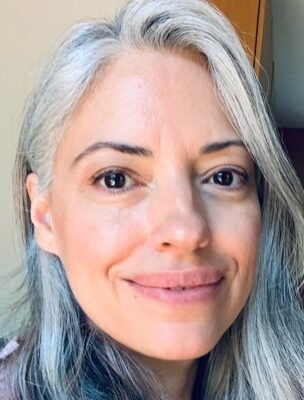 Cindy E. Rodríguez (pictured), president of the National Association of Hispanic Journalists New England chapter, responded, “We had a virtual cafecito via Zoom Wednesday with 24 members in attendance.
Cindy E. Rodríguez (pictured), president of the National Association of Hispanic Journalists New England chapter, responded, “We had a virtual cafecito via Zoom Wednesday with 24 members in attendance.
“It’s more convenient for people to join a Zoom meeting from wherever they are and this is the easiest way to get people together from places as far away as Hartford, Providence, Boston and Manchester.
“Yes, COVID weighed heavily in our decision to meet virtually, especially with cases rising.”
[Same with the NAHJ chapters in Chicago and the Pacific Northwest. No holiday party for 2021, chapter presidents Carly Luque and Pablo Gaviria, respectively, messaged in January. “Covid,” said Luque.]
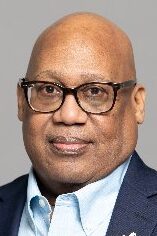 In Detroit, Vincent McCraw (pictured), president of the NABJ chapter there, said, “Detroit NABJ didn’t have a holiday party this year. Instead on the date that likely would have been our holiday party — Dec. 4 — the chapter held an in-person watch party for the induction of our member Rochelle Riley into the NABJ Hall of Fame.
In Detroit, Vincent McCraw (pictured), president of the NABJ chapter there, said, “Detroit NABJ didn’t have a holiday party this year. Instead on the date that likely would have been our holiday party — Dec. 4 — the chapter held an in-person watch party for the induction of our member Rochelle Riley into the NABJ Hall of Fame.
“Of the 80 people who RSVPd to attend, about 50-60 attended. All attendees were required to wear a face mask during the event except when eating or drinking. Each person also had their temperature taken before they were allowed to enter the event space.
“We held it at Shops on Top, a men’s and women’s clothing store owned by a Black husband and wife team, and located in Detroit’s Eastern Market. The spot includes an event space.”
New York magazine’s dark humor about media members’ parties and COVID ended wryly. You’ll have to read the piece to find out how.
- Michael Baleke, “PBS NewsHour”: South Africa reels under omicron wave amid vaccine lag, pans ‘rushed’ travel ban (video)
- Charles M. Blow, New York Times: I’m Furious at the Unvaccinated (Dec. 8)
- Stacey Burling, Philadelphia Inquirer: COVID-19 may have killed people who never tested positive for the virus, N.J. report finds
- Julie Hollar, Fairness & Accuracy In Reporting: As US Covid Deaths Reach 800,000, Atlantic Essay Asks: Who Cares?
- Gabby Miller, Tow Center for Digital Journalism/Columbia Journalism Review: More than 6,150 news workers were laid off amidst the COVID-19 pandemic (Dec. 10)
- Yasmin Tayag, the Atlantic: Don’t Be Surprised When You Get Omicron
- Ed Yong, the Atlantic: America Is Not Ready for Omicron
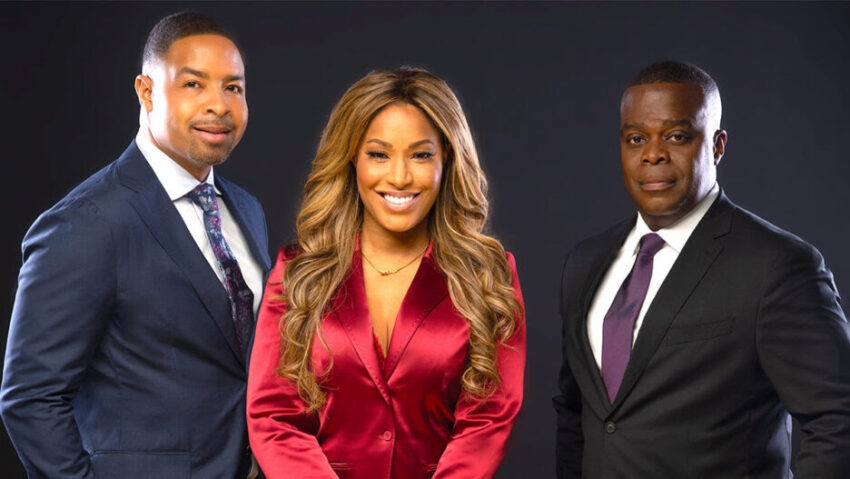
BNC Gains a Carrier but Announces Layoffs
On Thursday, Black News Channel announced a major boost in gaining access to millions of viewers via Cox Communications. On Friday, the channel announced layoffs, just days before the Christmas holiday.
“ ‘I am reaching out to you today with some very unfortunate news about a reduction in our workforce,’ said President and CEO Princell Hair in an internal memo obtained by TheWrap,” Lindsey Ellefson of TheWrap reported Friday.
“ ‘As you know, throughout the course of this year, we have been expanding at a rapid rate. At the same time, the U.S. economy is facing some tough challenges, several of which are heavily impacting the media industry and the revenue streams that fuel our emerging enterprise. I am incredibly proud of this team and all that we have built and accomplished. Your work has been outstanding, but we have reached a point where a considerable adjustment is needed in order to protect the health of our business and keep BNC moving forward.’
“It was not immediately clear how many staffers will be impacted by the cuts, but BNC employs roughly 300 people.”
Ellefson also wrote, “In a ratings ranking of all 124 cable channels in 2021, BNC tied with Comedy.tv for second-to-last place with an average of 4,000 viewers throughout the year, beating only BeIN Sports. In comparison, the highest-rated cable channel out of all 124 is Fox News, which averaged 2.36 million primetime viewers each evening in 2021. . . .”
Meanwhile, the network announced Thursday that Cox video customers now have the option to watch BNC on Contour and find the network by speaking “BNC” into their Contour voice remote, TVNewsCheck reported.
“With the addition of Cox Communications’ millions of subscribers that are located in 18 states, BNC’s linear distribution in North America continues to expand following its launch in 2020. Cox’s Contour TV product operates within several key markets, including New Orleans, San Diego, Phoenix and Las Vegas. . . .”
- Rodney Ho, Atlanta Journal-Constitution: Black News Channel announces layoffs a week before Christmas

Where Are the Native Journalists on Network News?
When Aliyah Chavez, an anchor for Indian Country Today, accepted her “Exceptional Journalism Award” Thursday from the Women’s Media Center, she spoke an uncomfortable truth.
Chavez, from Kewa Pueblo, formerly known as Santo Domingo Pueblo, noted that there were no Native American anchors at any major television network.
It wasn’t a subject that the networks were eager to discuss. CBS, NBC, ABC and CNN did not respond on the record to an inquiry from Journal-isms about Chavez’s concern.
The “American Indian and Alaska Native alone or in combination” population comprised 9.7 million people (2.9 percent of the total population) in 2020, according to the U.S. Census.
But with protests over pipelines and the first Native American Cabinet officer, Interior Secretary Deb Haaland, undertaking such actions as striking derogatory place names from federal property, Native Americans make news.
In fact, Circe Sturm, professor of anthropology at the University of Texas at Austin, wrote Wednesday that a “staggering” 86.5 percent increase in the Native population from 2010 to 2020 can best be explained as more non-Natives claiming to be Native Americans. “This growing movement has been captured by terms like ‘pretendian’ and ‘wannabe,’ ” Sturm wrote for the Conversation.
In 2016 and 2017, non-Native journalists labeled violence in Las Vegas, Orlando and elsewhere the “nation’s deadliest mass shooting.” Natives called out the inaccuracy.
Staff writers at Native Sun News produced a list of massacres they said shouldn’t be forgotten, such as the Wounded Knee tragedy of Dec. 29, 1890, when the U.S. Army 7th Cavalry Regiment killed as many as 300 Native Americans — men, women and children. More accurately, that “deadliest” phrase should have added “in modern history.”
Last month, referring to arrests during police raids at a pipeline protest in Canada, the Native American Journalists Association complained, “In recent days we saw more media attention dedicated to the arrests of non-Indigenous journalists than the sovereignty story they are there to tell.”
Rebecca Nagle, citizen of the Cherokee Nation and host and writer of the “This Land” podcast, was another of the Women’s Media Center’s diverse awardees. Noting that less than 1 percent of newsroom professionals are filled by Native Americans, Nagle said, “That’s just not a journalism problem; it’s an accuracy problem.” (video of the program)
 Dan Shelley (pictured), executive director of the Radio Television Digital News Association, did respond to a request for comment. “First, I congratulate Aliyah on her award,” Shelley messaged.
Dan Shelley (pictured), executive director of the Radio Television Digital News Association, did respond to a request for comment. “First, I congratulate Aliyah on her award,” Shelley messaged.
“Honestly, I don’t know whether there are any Native American anchors on network news. We measure diversity in local newsrooms each year, not at the network level. So I have no ability either to verify or to dispute Aliyah’s assertion.
“Nor do I have any substantive thoughts as to why it would be that network news operations may not have any Native American anchors. I would, however, say this:
“Native Americans should not, and cannot, be left out in the current, unprecedented effort underway in most television newsrooms across the country – network and local – to have more diversity among their employees, so that their coverage can better reflect the wide spectrum of the public they serve.”
- Kate Chesley, Stanford University: A commitment to her Native American roots leads Stanford’s Aliyah Chavez to a journalism career (June 12, 2019)
- Principal Chief Chuck Hoskin Jr., Cherokee Nation, indianz.com: Cherokee Nation’s efforts in language preservation honored by First Lady

Anger Over Border Agent’s Spying on Journalists
An African American Customs and Border Protection agent is at the heart of outrage that the agency “routinely used the country’s most sensitive databases to obtain the travel records and financial and personal information of journalists, government officials, congressional members and their staff, NGO workers and others,” in the words of Jana Winter of Yahoo News.
Documents “obtained by Yahoo News, including an inspector general report that spans more than 500 pages — and includes transcripts of interviews that investigators conducted with those involved, emails and other records — reveal a far more disturbing story than the targeting of a single journalist,” Winter wrote Dec. 11. “The man, whose real name is Jeffrey Rambo, worked at a secretive Customs and Border Protection division. The division, which still operates today, had few rules. . . .
“As many as 20 journalists were investigated as part of the division’s work, which eventually led to referrals for criminal prosecution against Rambo, his boss and a co-worker. None were charged, however.”
The questionable leak investigation Rambo undertook in 2017 has been reported at least since that year, alarming such organizations as the Reporters Committee for Freedom of the Press and the Committee to Protect Journalists, which filed Freedom of Information act requests seeking “audits, logs or records” related to Rambo’s actions.
 The new outrage — from Capitol Hill as well as from news organizations such as the Associated Press and The New York Times — was prompted by the 7,000-word story by Winter published Dec. 11. Her piece followed a report from the Department of Homeland Security Office of Inspector General.
The new outrage — from Capitol Hill as well as from news organizations such as the Associated Press and The New York Times — was prompted by the 7,000-word story by Winter published Dec. 11. Her piece followed a report from the Department of Homeland Security Office of Inspector General.
Rambo believes he was unfairly vilified for seeking out Ali Watkins, a national security reporter who broke big stories about the investigation into then-President Trump’s alleged ties to Russia, invasively tracking her personal life, Winter wrote. Rambo “said in a wide-ranging exclusive interview with Yahoo News that he acted legally and appropriately. He agreed to speak amid what he describes as escalating threats against him in San Diego, where he now lives, and after Yahoo News obtained a copy of the inspector general investigation into Rambo and his colleagues,” Winter wrote.
“ ‘I’m being accused of blackmailing a journalist and trying to sign her up as an FBI informant, which is what’s being plastered all around San Diego at the moment because of misinformation reported by the news media,’ ” Rambo said in the interview. It was conducted in the coffee shop Rambo owns in a tight-knit Latino community, where he says he indulges his passion for coffee roasting.
Winter also wrote, “The news stories follow him everywhere. Recently, he had a date planned with a woman, but she canceled after reading articles about him. . . . “
In late September, “he arrived one morning and found a photo of himself plastered to a telephone pole outside, identifying him as a Border Patrol agent. It called him a racist who tried to blackmail a journalist. Some posters had a QR code that linked to a list of articles about Rambo. The posters were also plastered around the neighborhood . . . .”
- Amy Goodman with Jana Winter, “Democracy Now!”: “No Rules”: A Border Patrol Unit Worked with the FBI to Investigate Journalists. Is It Still Running?
Correspondent Amna Nawaz and Princeton University scholar Imani Perry discuss bell hooks’ work and legacy Wednesday on the “PBS NewsHour.” (Credit: YouTube)
Sister Writers Say bell hooks Inspired Them
“bell hooks was a radical feminist, a scholar and author who spent the ‘90s publishing about a book a year,” documentarian dream hampton wrote Wednesday in Time. “She was a poet, a mentor, a professor and an icon whose influence is immeasurable. When I was 19 and began talking back to hip-hop in my own essays and articles, I’d cite her again and again. I fought to have my name published in lowercase letters like hers. I wanted to be incisive and battle-ready when I wrote.
“Like a lot of young Black women I knew, I thought of myself as part of her army. Daughters of her thought, ready to integrate her text and thinking into our public and personal lives. Her seminal Ain’t I A Woman was a field guide toward a liberation that not only considered gender but centered it. . . .”
- Marcie Bianco, NBC Think: bell hooks’ death is a call to action
- Linda Blackford, Lexington (Ky.) Herald-Leader: ‘The world is a lesser place today without her’: Acclaimed writer bell hooks dies at 69.
- Keyaira Boone, Essence: The Glory Of bell hooks Will Live Forever – Revisit Some Of Her Greatest Work Here
- Amy Goodman and Beverly Guy-Sheftall, “Democracy Now!”: Remembering bell hooks & Her Critique of “Imperialist White Supremacist Heteropatriarchy” (video)
- Hua Hsu, New Yorker: The Revolutionary Writing of bell hooks
- María Luisa Paúl, Washington Post: The legacy of bell hooks — trailblazing scholar and activist — lives through her students
- Jennifer Schuessler, New York Times: The Wide-Angle Vision, and Legacy, of bell hooks
- Rebecca Walker, Los Angeles Times: bell hooks was a mighty fire
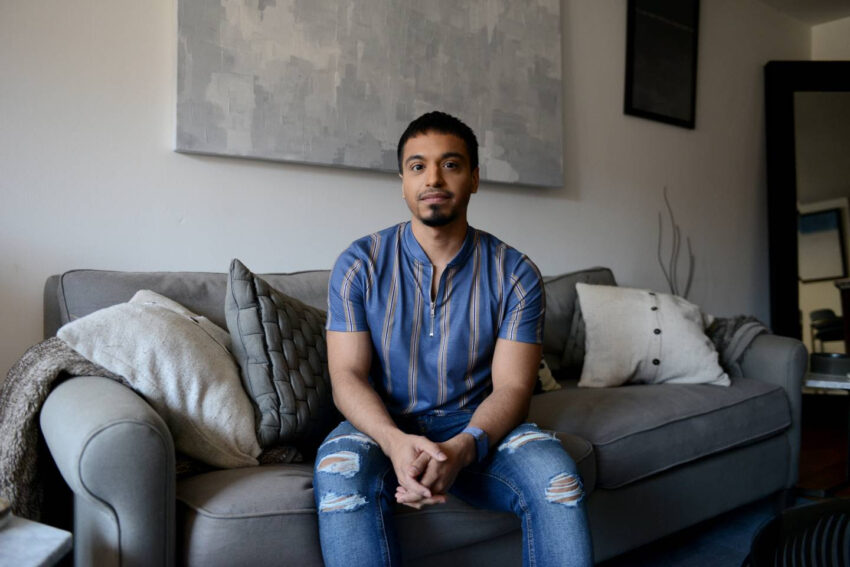
They’re ‘Unseen’: Sexually Exploited Boys of Color
Too often, “male victims of sexual exploitation go unseen and unhelped, specialists say, their stories stifled by personal shame, stigma and a world that has trouble seeing boys and young men as victims at all, especially gay and trans youth and boys of color,” Jenifer B. McKim and Phillip Martin wrote in April in the opening story in their “Unseen: The Boy Victims of the Sex Trade” series for WGBH Boston.
In the series, which Monday produced Part 5, they detailed how many are Black and brown male victims, and added that colorism plays a role in their victimization.
“Many young men have traveled the same path to homelessness and then to sexual exploitation — and young Black and brown men are disproportionately at risk,” they wrote in Part 2.
“. . . . In Massachusetts, Black youth are more than 4 times as likely to experience homelessness compared to the overall youth population; Latino youth are nearly three times as likely, according to a 2019 state report.
“A 2016 national study by the New York-based Center for Court Innovation found that more than a third of young people who sold sex for something of value were boys and young men, and 85 percent of the youth were Black and brown. Under federal law any youth under the age of 18 involved in the sex trade is considered a trafficking victim.
“Shaplaie Brooks — program director for a Dorchester-based program called BUILD focusing on helping sexually exploited and trafficked males — says she works with many young people who have been kicked out of their homes, finding themselves leaning on predators who push them out on the streets. Most of her clients are youths of color.
“But getting male victims of sexual exploitation to come forward, especially in Latino and Black communities, poses a significant challenge, Brooks said. Very few males who work in the sex trade, or survived it, will admit to having been exploited or trafficked. It’s a hard truth, said Brooks, that is clouded by a fear of facing transphobia and homophobia.
“And Brooks says young males are often seen as troublemakers, not victims. . . .
“Joel Filmore says it’s been decades since he was a victim of sex trafficking in Chicago. He is now a therapist with a doctorate. But the 50-year-old bi-racial therapist says the same racism exists today that helped trap him in the system in the 1990s.
“Filmore’s father was Black and largely not around. His mother was white, he said, and when she was murdered, he was sent to live with her family, in a home plagued with sexual abuse, incest and racism.
“ ‘The color of my skin was the predominant variable in my childhood that led to the abuse — sexual, physical and otherwise,’ he said.”

More Prominence in White House Briefing Room
The White House Correspondents’ Association announced changes Friday in the seating assignments in the White House briefing room that elevate the status of journalists representing underrepresented communities.
“To enhance diversity in the briefing room, assignments have been given to organizations that target Black, Hispanic and LGBTQ audiences, as well as readership and viewership that lies across the ideological spectrum,” Steven Portnoy of CBS News Radio, the association president, told members.
“The WHCA has also for the first time granted seat assignments to local television station groups, which reach viewers in markets across America. Additionally, business networks that have covered the White House for years have finally been granted spots on our chart. . . .”
The changes are effective Jan. 3.
N.Y. Times Homes In on Motive for Moise Killing
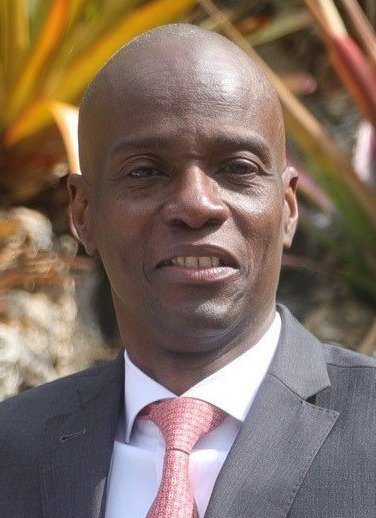 “President Jovenel Moïse of Haiti (pictured) was about to name names,” Maria Abi-Habib reported Dec. 12 for The New York Times.
“President Jovenel Moïse of Haiti (pictured) was about to name names,” Maria Abi-Habib reported Dec. 12 for The New York Times.
“Before being assassinated in July, he had been working on a list of powerful politicians and businesspeople involved in Haiti’s drug trade, with the intention of handing over the dossier to the American government, according to four senior Haitian advisers and officials tasked with drafting the document.
“The president had ordered the officials to spare no one, not even the power brokers who had helped propel him into office, they said — one of several moves against suspected drug traffickers that could explain a motive for the assassination. . . .
“In the months before his death, Mr. Moïse took steps to clean up Haiti’s customs department, nationalize a seaport with a history of smuggling, destroy an airstrip used by drug traffickers and investigate the lucrative eel trade, which has recently been identified as a conduit for money laundering.
“The Times interviewed more than 70 people and traveled to eight of Haiti’s 10 departments, or states, to interview politicians, Mr. Moïse’s childhood friends, police officers, fishermen and participants in the drug trade to understand what happened in the last seven months of the president’s life that may have contributed to his death. Many of them now fear for their lives as well. . . .”
- Nick Shifrin, “PBS NewsHour”: Moise assassination may be linked to what he knew about Haitian drugs, arms trafficking
Short Takes
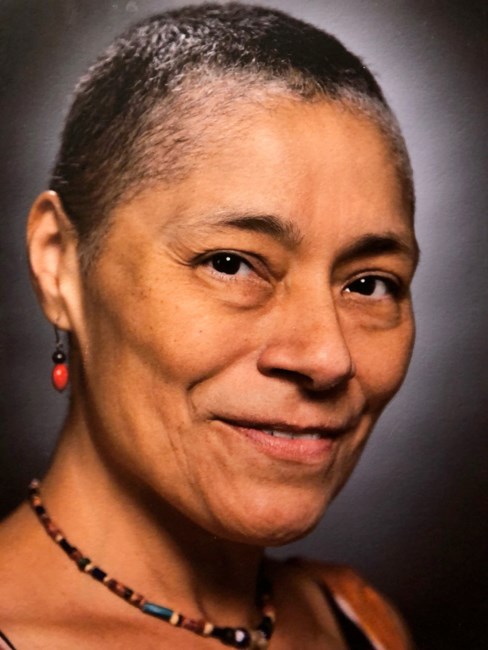 The Fidler family and the National Association of Hispanic Journalists announced a scholarship Tuesday to be awarded to Afro-Latino students pursuing careers in English and Spanish-language journalism. The scholarship is offered in honor of the late Ada Lourdes Fidler (née Vigo) (pictured). Initially the agreement is for $30,000. Separately, NAHJ President Nora Lopez announced in an email to members that NAHJ reached a record 4,355 members this year.
The Fidler family and the National Association of Hispanic Journalists announced a scholarship Tuesday to be awarded to Afro-Latino students pursuing careers in English and Spanish-language journalism. The scholarship is offered in honor of the late Ada Lourdes Fidler (née Vigo) (pictured). Initially the agreement is for $30,000. Separately, NAHJ President Nora Lopez announced in an email to members that NAHJ reached a record 4,355 members this year.
 “The Atlantic has promoted Andrea Valdez (pictured) to the post of managing editor, focusing on new and expanding areas of coverage in the newsroom, and in developing and driving forward journalistic ideas,” Mariam Ahmed reported Thursday for Talking Biz News. “She was previously SVP, audience strategy. She also served as editor-in-chief of the independent nonprofit newsroom” The19th. She was also editor-in-chief at The Texas Observer and editor of Wired.com. . . .”
“The Atlantic has promoted Andrea Valdez (pictured) to the post of managing editor, focusing on new and expanding areas of coverage in the newsroom, and in developing and driving forward journalistic ideas,” Mariam Ahmed reported Thursday for Talking Biz News. “She was previously SVP, audience strategy. She also served as editor-in-chief of the independent nonprofit newsroom” The19th. She was also editor-in-chief at The Texas Observer and editor of Wired.com. . . .”
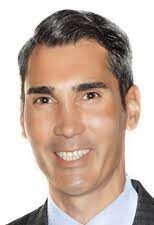 “NLGJA: The Association of LGBTQ Journalists announced that USA TODAY Network Tennessee Opinion and Engagement Director David Plazas (pictured) is the recipient of the 2021 NLGJA: The Association of LGBTQ Journalists Leadership Award. The award recognizes individuals who have made a positive impact on their newsrooms by increasing diversity and improving news coverage of the LGBTQ community,” the organization said. “Plazas chairs The Tennessean’s Diversity and Inclusion Task Force, which has led efforts to create more equity in coverage, the newsroom and projects. The group developed the Black Tennessee Voices initiative launched in 2020 to tell stories for and with Nashville’s Black community. A Latino Tennessee Voices newsletter launched in September. He is past co-lead of Gannett’s Pride Forward employee resource group and co-chairs Interfaith Forward ERG. He serves on the CEO’s Diversity Advisory Council. . . .”
“NLGJA: The Association of LGBTQ Journalists announced that USA TODAY Network Tennessee Opinion and Engagement Director David Plazas (pictured) is the recipient of the 2021 NLGJA: The Association of LGBTQ Journalists Leadership Award. The award recognizes individuals who have made a positive impact on their newsrooms by increasing diversity and improving news coverage of the LGBTQ community,” the organization said. “Plazas chairs The Tennessean’s Diversity and Inclusion Task Force, which has led efforts to create more equity in coverage, the newsroom and projects. The group developed the Black Tennessee Voices initiative launched in 2020 to tell stories for and with Nashville’s Black community. A Latino Tennessee Voices newsletter launched in September. He is past co-lead of Gannett’s Pride Forward employee resource group and co-chairs Interfaith Forward ERG. He serves on the CEO’s Diversity Advisory Council. . . .”
- “Byron Allen’s Allen Media Broadcasting has signed a purchase agreement for its Fox affiliate WCOV Montgomery, Ala., from Woods Communications Corp. for $28.5 million in cash. This acquisition is expected to close in 2022,” TVNewsCheck reported Wednesday. “Upon closing, the purchase will increase the number of TV stations owned and/or operated by Allen Media Broadcasting to 36 stations across 21 U.S. television markets. . . .”
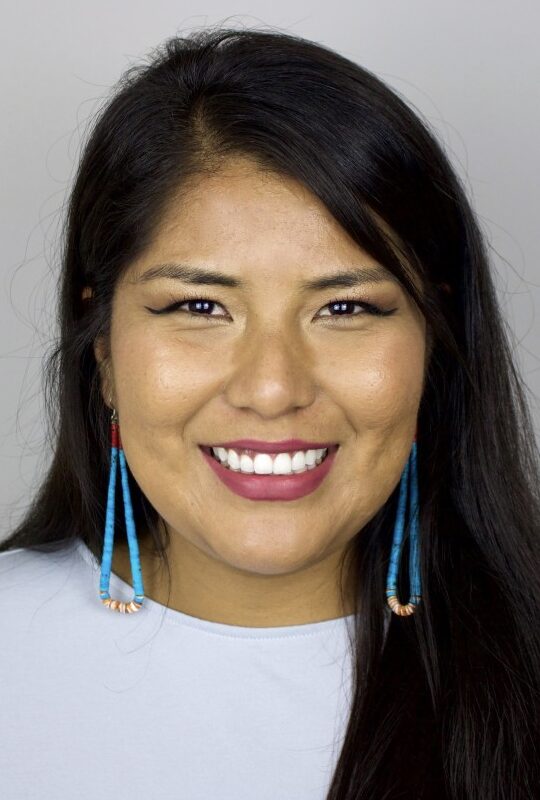 “ICT will begin 2022 with a new editor: Jourdan Bennett-Begaye, Diné (pictured). She will be the first woman to be the chief news executive for the 40-year-old newspaper and website,” Indian Country Today announced on Dec. 9. “Mark Trahant, Shoshone-Bannock, is taking on a new role with ICT. He will be the lead correspondent for an Indigenous economics project and will work on special projects with IndiJ Public Media President Karen Michel, Ho-Chunk. Trahant will carry the title of editor-at-large. . . .”
“ICT will begin 2022 with a new editor: Jourdan Bennett-Begaye, Diné (pictured). She will be the first woman to be the chief news executive for the 40-year-old newspaper and website,” Indian Country Today announced on Dec. 9. “Mark Trahant, Shoshone-Bannock, is taking on a new role with ICT. He will be the lead correspondent for an Indigenous economics project and will work on special projects with IndiJ Public Media President Karen Michel, Ho-Chunk. Trahant will carry the title of editor-at-large. . . .”
- “Republicans swept Virginia’s races for Governor, lieutenant governor and attorney general in November led by newly elected governor Glenn Youngkin’s come-from-behind victory against Terry McCauliffe, and broadcast TV political ads were a factor in turnout and decision making,” John Eggerton reported Wednesday for nexttv.com. “A new study from the Television Bureau of Advertising, whose task is to promote the efficacy of broadcast advertising, found that, in the governor’s race, TV and the political ads that ran there, [were] the most important ‘influencer’ at all stages of the process – – defined as ‘awareness/interest/get more information/consider voting/vote.’ And of the TV options, broadcast trumped cable. . . .”
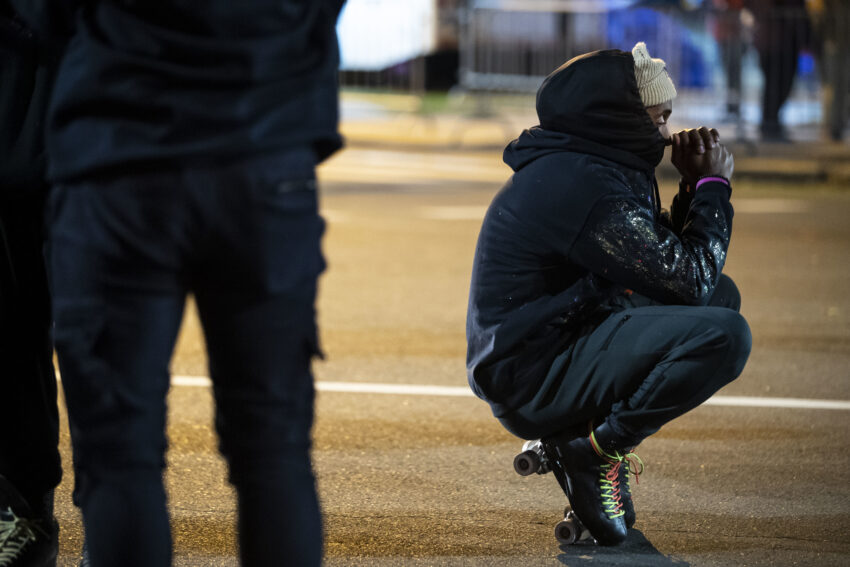
- “One of the biggest, continuous criticisms I have, as do other visual editors who are in organizations of color, is that the only time you see us, most of the time, it is related to crime or athletics or entertainment,” Akili Ramsess, executive director of the National Press Photographers Association, said Thursday in the Philadelphia Inquirer. Ramsess was part of “a series of conversations with Black photographers and videographers on how photographing Black people in the media impacts our wildest dreams,” the Inquirer’s Elizabeth Wellington wrote. Other participants were Ronald Gray, Philadelphia-area photographer; Monica Herndon, Philadelphia Inquirer; and Philadelphia-area photographers Kriston Jae Bethel and Ron Stephens Jr. The sessions were conducted by The Inquirer’s director of photography, Danese Kenon, as part of the paper’s “Wildest Dreams” project.
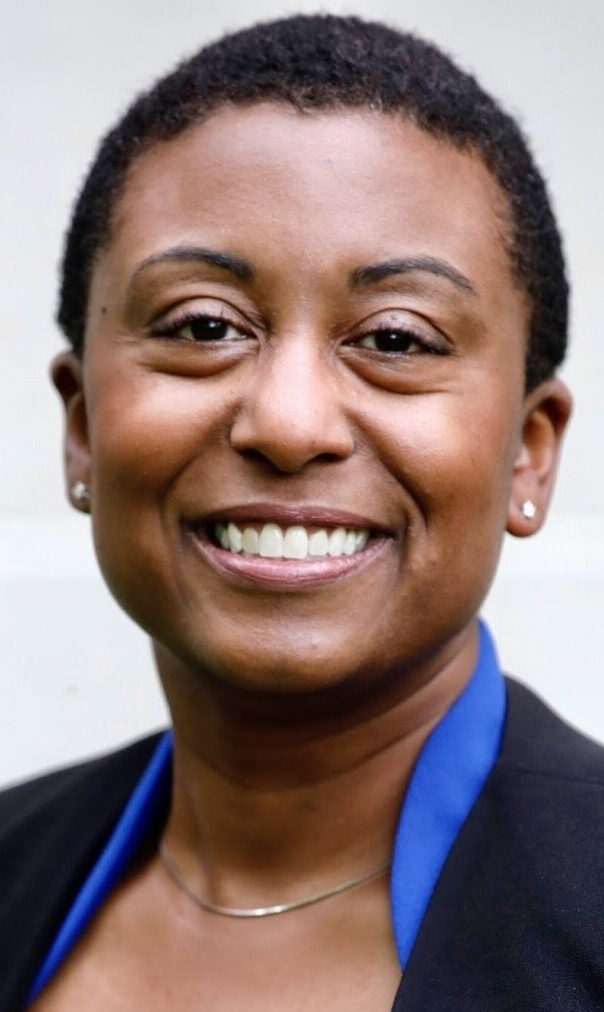 Ebony Reed, (pictured) who oversaw audience engagement as chief of new audiences and community at The Wall Street Journal, is joining the Marshall Project as its first chief strategy officer, the project announced Monday. Reed is to oversee the launch and rollout of local newsroom strategy, as well as managing the communications, marketing and developing strategies to grow the organization’s reach. The Marshall Project’s first local news operation, in Cleveland, is to launch in 2022.
Ebony Reed, (pictured) who oversaw audience engagement as chief of new audiences and community at The Wall Street Journal, is joining the Marshall Project as its first chief strategy officer, the project announced Monday. Reed is to oversee the launch and rollout of local newsroom strategy, as well as managing the communications, marketing and developing strategies to grow the organization’s reach. The Marshall Project’s first local news operation, in Cleveland, is to launch in 2022.
- PBS’ “Washington Week” Friday featured one of the most diverse panels of reporters to be seen: Host Yamiche Alcindor and panelist Eva McKend of CNN are African American; Sabrina Siddiqui of The Wall Street Journal is of Italian and south Asian background; Ashley Parker of the Washington Post is Caucasian and Nicholas Wu of Politico is Asian American.
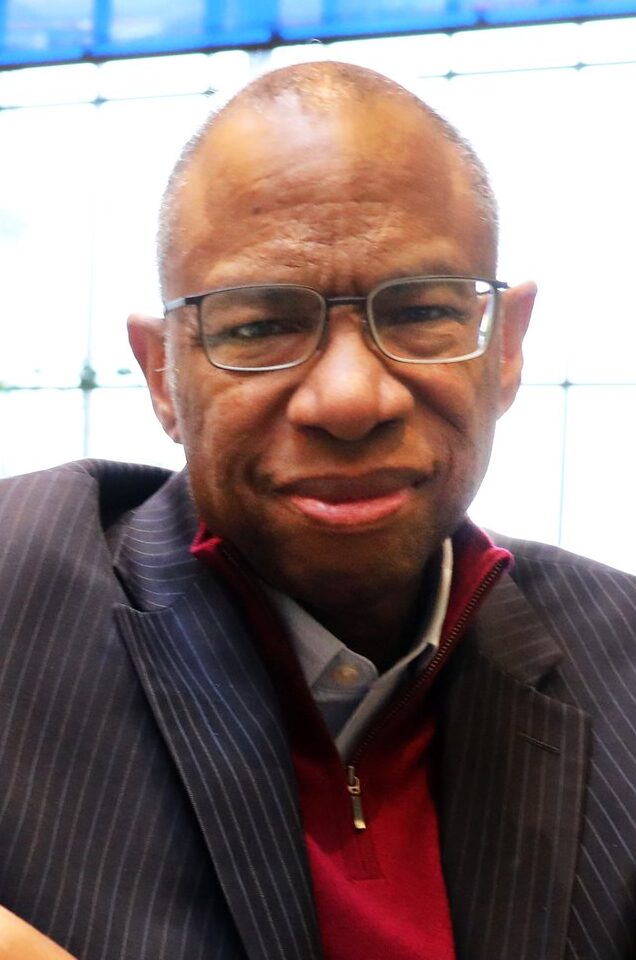 Essex Porter (pictured) “retired late last month from Seattle’s KIRO-TV and is learning to appreciate a new way of life after 43 busy and successful years in broadcast journalism, 39 of them at KIRO,” Grace Gorenflo reported Monday, updated Tuesday, for the Seattle Times. “Throughout the years, colleagues’ descriptions of Porter have remained steady and are reminiscent of [Walter] Cronkite — honest, direct and fair. . . .”
Essex Porter (pictured) “retired late last month from Seattle’s KIRO-TV and is learning to appreciate a new way of life after 43 busy and successful years in broadcast journalism, 39 of them at KIRO,” Grace Gorenflo reported Monday, updated Tuesday, for the Seattle Times. “Throughout the years, colleagues’ descriptions of Porter have remained steady and are reminiscent of [Walter] Cronkite — honest, direct and fair. . . .”
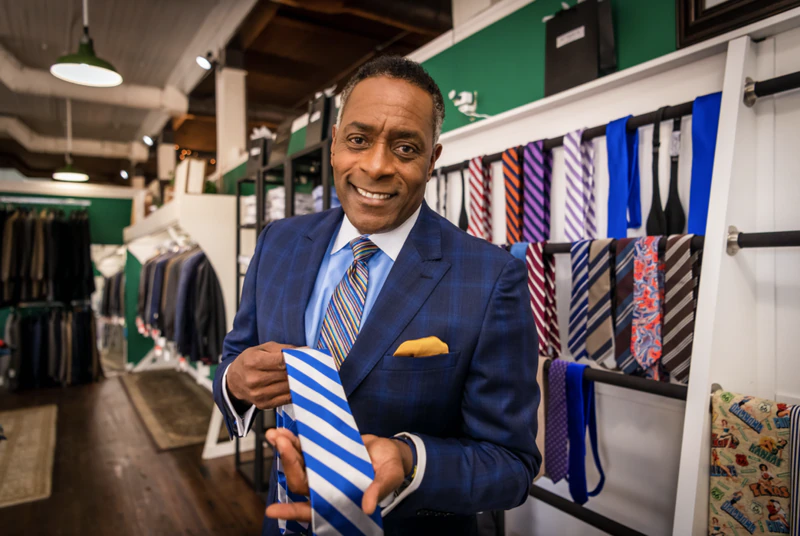
- “ ‘Bold and powerful’ could be adjectives to describe ties from Art Franklin’s debut men’s clothing line — the Art Franklin Collection. Those words also could be used to describe the man himself,” Ryan Michaels reported for the Birmingham (Ala.) Times, published Monday on al.com. “Franklin, an anchor with Birmingham’s WIAT-TV CBS 42 since 2016, launched his collection in late November through Treś’ Fine Clothing, owned by Treś Washington in the Cottons Building at 400 19th Street Ensley. . . .”
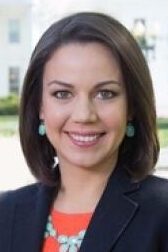 “Janet Rodríguez (pictured) has resigned from Univision, after more than five years as the network’s White House correspondent,” Veronica Villafañe reported Monday for her Media Moves site. “Her last day at Univision was Friday, December 10. The Emmy-award winning journalist is moving on to a corporate communications job at Facebook’s parent company Meta Platforms. Starting in early January, she’ll start a new role as internal communications manager for WhatsApp. . . .”
“Janet Rodríguez (pictured) has resigned from Univision, after more than five years as the network’s White House correspondent,” Veronica Villafañe reported Monday for her Media Moves site. “Her last day at Univision was Friday, December 10. The Emmy-award winning journalist is moving on to a corporate communications job at Facebook’s parent company Meta Platforms. Starting in early January, she’ll start a new role as internal communications manager for WhatsApp. . . .”
 “After the meteoric rise of Malika Andrews, ESPN is hiring her younger sister, Kendra, as an NBA reporter, The Post has learned,” Andrew Marchand reported Wednesday for the New York Post. “Kendra, 24, will be ESPN’s Warriors writer and appear on TV for the network. She and Malika, 26, grew up in the San Francisco area. Kendra is currently the Warriors reporter and a host for NBC Sports Bay Area. It was Kendra, not Malika, who first wanted to be a sports reporter. . . .”
“After the meteoric rise of Malika Andrews, ESPN is hiring her younger sister, Kendra, as an NBA reporter, The Post has learned,” Andrew Marchand reported Wednesday for the New York Post. “Kendra, 24, will be ESPN’s Warriors writer and appear on TV for the network. She and Malika, 26, grew up in the San Francisco area. Kendra is currently the Warriors reporter and a host for NBC Sports Bay Area. It was Kendra, not Malika, who first wanted to be a sports reporter. . . .”
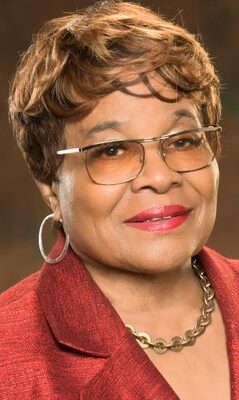 “During a sold-out celebration on Sunday, December 5, [Rosetta] Miller-Perry (pictured), the trailblazing 2019 National Newspaper Publishers Association (NNPA) Lifetime Achievement Award recipient, captured another high honor,” Stacy M. Brown Dec. 9 wrote for the National Newspaper Publishers Association. ” ‘Yes, the 30th anniversary of the Tennessee Tribune certainly has to be celebrated here in Nashville, but this is global,’ NNPA President and CEO Dr. Benjamin F. Chavis Jr. declared to the hundreds gathered at the Lighthouse on the Lake in Hendersonville. ‘As of this day, we claim [Miller-Perry] as the Queen Mother of the Black Press of America,’ Dr. Chavis exclaimed as the crowd rose to its collective feet, responding with a thunderous ovation of approval. . . .”
“During a sold-out celebration on Sunday, December 5, [Rosetta] Miller-Perry (pictured), the trailblazing 2019 National Newspaper Publishers Association (NNPA) Lifetime Achievement Award recipient, captured another high honor,” Stacy M. Brown Dec. 9 wrote for the National Newspaper Publishers Association. ” ‘Yes, the 30th anniversary of the Tennessee Tribune certainly has to be celebrated here in Nashville, but this is global,’ NNPA President and CEO Dr. Benjamin F. Chavis Jr. declared to the hundreds gathered at the Lighthouse on the Lake in Hendersonville. ‘As of this day, we claim [Miller-Perry] as the Queen Mother of the Black Press of America,’ Dr. Chavis exclaimed as the crowd rose to its collective feet, responding with a thunderous ovation of approval. . . .”
- “The spike of public protests that sometimes turned violent requires guarantees from the State, but also preparation by Latin American journalists who find themselves in the midst of confrontations,” Teresa Mioli wrote Monday for LatAm Journalism Review. “Whether reporting on a demonstration against political corruption or rises in bus fare or illegal logging, preparing for these kinds of assignments can involve not only research into the people and issues involved, but also how to protect oneself from potential violence.” Mioli also wrote, “Alejandra González, Article 19 Mexico consultant for attention to victims of serious human rights violations, told LatAm Journalism Review (LJR), ‘I see worse impacts in those who are not prepared, in those who do not envision themselves in a particular context, in those who do not know what to expect as opposed to those who do have a notion, who position their work in a conflict scenario.”
- Reporters Without Borders Thursday condemned “a well-known Sierra Leonean rapper’s outrageously insulting and obscene comments on Facebook about a radio station director. Online harassment of journalists in Sierra Leone must stop, RSF says. In a video posted on Facebook on 11 December, Alhaji Amadu Bah, a popular but controversial rapper also known as LAJ, “referred to Radio Democracy “director Asmaa James as a ‘bastard child’ because of her station’s reporting about him, and he warned her that ‘the next time I see you I will piss on your face.’ . . . After many critical comments on social media and a statement by the Sierra Leone Association of Journalists, the rapper posted an apology on Facebook on 13 December. James filed a complaint with the police cyber-unit yesterday. . . .”
- “Data from Twitter’s own transparency reports reveal that, in 2020, the Indian government asked Twitter to remove nearly 10,000 tweets, up from about 1,200 the prior year; in 2017, the government only demanded that Twitter delete 248 tweets,” Paroma Soni wrote Tuesday for Columbia Journalism Review. Soni also wrote, “The rapid advancement of technology amplified two competing dynamics: criticism against the state became much easier, and with it, the government’s ability to control what its citizens said. . . . “
- “Ethiopian authorities have arrested at least 14 journalists since declaring a state of emergency on November 2 as part of the government’s response to a year-long civil war against rebel forces allied with the Tigray Peoples’ Liberation Front (TPLF),” the Committee to Protect Journalists said Wednesday. Reporters Without Borders added Thursday, “Amir Aman Kiyaro, a freelance video reporter who works for the Associated Press news agency, was arrested in the capital, Addis Ababa, on his return from a reporting trip on 28 November. According to the police, he is accused of ‘serving the purposes’ of a terrorist group by interviewing some of its members. Two other journalists, Thomas Engida and Addisu Mulneh, were arrested at the same time on similar charges. . . .”
To subscribe at no cost, please send an email to journal-isms+subscribe@groups.io and say who you are.
Facebook users: “Like” “Richard Prince’s Journal-isms” on Facebook.
Follow Richard Prince on Twitter @princeeditor
Richard Prince’s Journal-isms originates from Washington. It began in print before most of us knew what the internet was, and it would like to be referred to as a “column.” Any views expressed in the column are those of the person or organization quoted and not those of any other entity. Send tips, comments and concerns to Richard Prince at journal-isms+owner@
View previous columns (after Feb. 13, 2016).
View previous columns (before Feb. 13, 2016)
- Diversity’s Greatest Hits, 2018 (Jan. 4, 2019)
- Book Notes: Is Taking a Knee Really All That? (Dec. 20, 2018)
- Book Notes: Challenging ’45’ and Proudly Telling the Story (Dec. 18, 2018)
- Book Notes: Get Down With the Legends! (Dec. 11, 2018)
- Journalist Richard Prince w/Joe Madison (Sirius XM, April 18, 2018) (podcast)
- Richard Prince (journalist) (Wikipedia entry)
- February 2018 Podcast: Richard “Dick” Prince on the need for newsroom diversity (Gabriel Greschler, Student Press Law Center, Feb. 26, 2018)
- Diversity’s Greatest Hits, 2017 — Where Will They Take Us in the Year Ahead?
- Book Notes: Best Sellers, Uncovered Treasures, Overlooked History (Dec. 19, 2017)
- An advocate for diversity in the media is still pressing for representation, (Courtland Milloy, Washington Post, Nov. 28, 2017)
- Morgan Global Journalism Review: Journal-isms Journeys On (Aug. 31, 2017)
- Diversity’s Greatest Hits, 2016
- Book Notes: 16 Writers Dish About ‘Chelle,’ the First Lady
- Book Notes: From Coretta to Barack, and in Search of the Godfather
- Journal-isms’ Richard Prince Wants Your Ideas (FishbowlDC, Feb. 26, 2016)
- “JOURNAL-ISMS” IS LATEST TO BEAR BRUNT OF INDUSTRY’S ECONOMIC WOES (Feb. 19, 2016)
- Richard Prince with Charlayne Hunter-Gault, “PBS NewsHour,” “What stagnant diversity means for America’s newsrooms” (Dec. 15, 2015)
- Book Notes: Journalists Follow Their Passions
- Book Notes: Journalists Who Rocked Their World
- Book Notes: Hands Up! Read This!
- Book Notes: New Cosby Bio Looks Like a Best-Seller
- Journo-diversity advocate turns attention to Ezra Klein project (Erik Wemple, Washington Post, March 5, 2014)
When you shop @AmazonSmile, Amazon will make a donation to Journal-Isms Inc. https://t.co/OFkE3Gu0eK
— Richard Prince (@princeeditor) March 16, 2018

